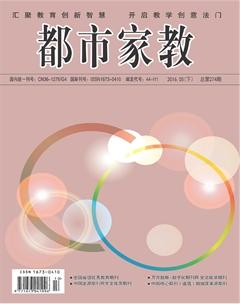English—Chinese Translation Materials evaluation checklist
There are numerous literatures about translation materials evaluation criteria, which aims to improve teachers ability of selecting and adapting materials and be able to make the best use of class time. Besides teachers efforts, ‘competence of the author (Tucker, 1975) and whether the material is ‘based on a contrastive analysis of English (Williams, 1983) also present problems of clarification and scoring. William creatively developed material evaluation criteria based on existing studies and made it more practical. Almost at the same time, Cunningsworth (1984) created a detailed evaluation criterion for teachersguidance. This paper, however, will base on the five criteria proposed by Tomlinson &Masuhara (2004) and make certain justifications according to the target learner.
Since most of my students will become English-Chinese or Chinese-English translators in the future, it thus crucial for them to start preparing since freshmen year. Two of Tomlinson &Masuhara (2004)s evaluation criteria are of great value for evaluation of English translation materials, which are: “Is each question free of dogma?” and “Is each question reliable in the sense that other evaluators would interpret it in the same way?” Tomlinson &Masuhara (2004:7) The first criterion could help readers have a critical mind when reading the translation materials. And the second criterion could help learners reflect and think twice when looking at the translation.
However, these criteria are too general to evaluate the English translation materials.To fully evaluate and adapt the required teaching material, I designed the following checklist (appendix A). Firstly, a good title should be intriguing and attract learners attention, and it should not be too wordy. As for the layout of the book, we can evaluate from two aspects, which aim to see whether the design of the book followed a structured and logic pattern; normally the subtitles should explain the previous title. There are several criteria when it comes to the most important part of the teaching material—content evaluation, since teachers should make sure the translation of the extracts are of high quality and useful for translation guidance. Besides, translation industry is a fast changing area and we should know whether the material still has practical value in current society,and the chosen words or phrases have been updated or not. Since the required material in our school are only in print version, teachers need to decide whether non-print material should be introduced; which part should be emphasized and which part should be assigned to them, only in this way can we make well use of the class time.
Reference:
[1]Brislin, R. W. (1970). Back-translation for cross-cultural research.Journal of cross-cultural psychology, 1(3), 185-216.
[2]Byram, M. S., &Feng, A. (2005). Teaching and researching intercultural competence.
[3]Ellis, R. (1990). Instructed second language acquisition: Learning in the classroom. Oxford: Basil Blackwell.
[4]Cunningsworth, A., & Tomlinson, B. (1984). Evaluating and selecting EFL teaching materials. Heinemann Educational.
[5]Geisinger, K. F. (1994). Cross-cultural normative assessment: Translation and adaptation issues influencing the normative interpretation of assessment instruments. Psychological assessment, 6(4), 304.
Appendix A
Adapted Materials Evaluation Checklist
Title
Whether the title is intriguing and succinct?
Whether the title shows a clear picture of the books main topic?
Material Structure/Layout
Does the subtitle fully explain previous frame title?
Are all the relevant aspects surveyed?
Content
Is the aim of each chapter clear?
Is the topic of the book useful for English translators?
Whether the translation is of high quality and trustworthy?
Whether the material is up-to-date?
Whether the material has practical value in current society?
Is it too early to learn this book when it comes to English translators of primary level?
Is it necessary to read the whole texts? Which part should be adapted with other materials?
Which part should teachers cover in class? And which part should be assigned as homework?
Whether the material is interesting enough to motivate learners desire of becoming an excellent translator?
To what extent the material can help learners know the important role of translator?
作者简介:
李怡静,成都理工大学外国语学院;专业:外国语言学及应用语言学;研究方向:语言与文化。

